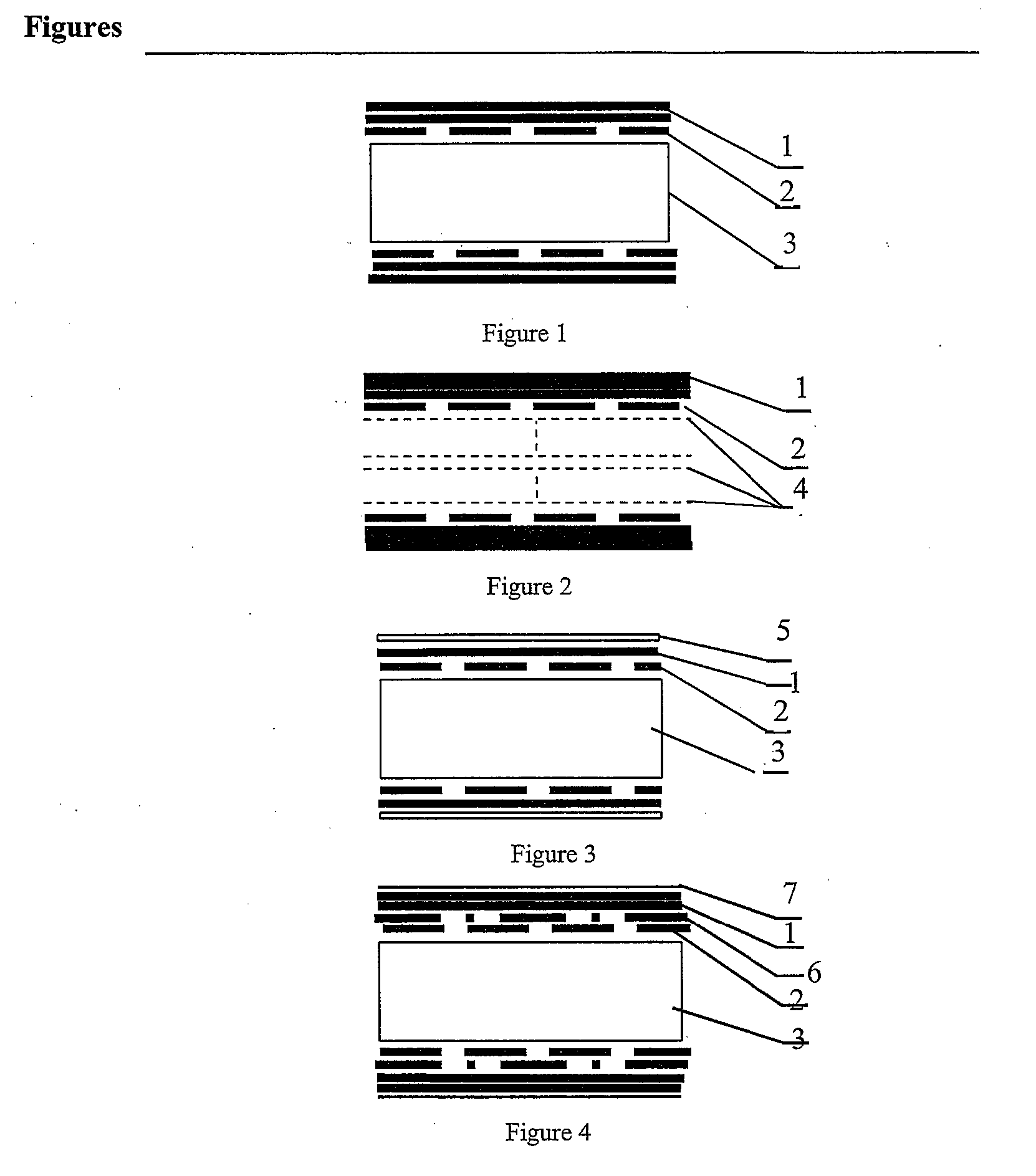Reinforced composite container flooring with resin-impregnated veneers and method of manufacture
a technology of resin-impregnated veneers and reinforced composite containers, which is applied in sustainable manufacturing/processing, packaging foodstuffs, packaged goods types, etc., can solve the problems of delamination ply separation or cracks in veneers, short supply of keruing and apitong logs with large diameters, etc., to improve the dimensional stability of veneers, increase mechanical properties, and improve the effect of elasticity
- Summary
- Abstract
- Description
- Claims
- Application Information
AI Technical Summary
Benefits of technology
Problems solved by technology
Method used
Image
Examples
Embodiment Construction
[0019]When describing the present invention, all terms not defined herein have their common art-recognized meanings. As used herein, the term “about” refers to a margin of plus or minus 10%, or within the tolerance of a suitable measuring device or instrument. All values of wood density refers to the density of oven-dried wood.
[0020]The term “resin” means a natural or synthetic resin which has adhesive and water-repellant properties. The resin may be weather resistant, and may include, without limitation, formaldehyde resins such as phenol-formaldehyde or melamine-formaldehyde but may include any other weather resistant resin of similar properties.
[0021]The present invention relates to a resin impregnated-wood composite board suitable for use as a container flooring material. In general terms, the invention comprises a multilayer board having a surface composite resin impregnated wooden veneer layer and a wooden core layer. In one embodiment, the resin is a weather resistant resin. ...
PUM
| Property | Measurement | Unit |
|---|---|---|
| Temperature | aaaaa | aaaaa |
| Fraction | aaaaa | aaaaa |
| Fraction | aaaaa | aaaaa |
Abstract
Description
Claims
Application Information
 Login to View More
Login to View More - R&D
- Intellectual Property
- Life Sciences
- Materials
- Tech Scout
- Unparalleled Data Quality
- Higher Quality Content
- 60% Fewer Hallucinations
Browse by: Latest US Patents, China's latest patents, Technical Efficacy Thesaurus, Application Domain, Technology Topic, Popular Technical Reports.
© 2025 PatSnap. All rights reserved.Legal|Privacy policy|Modern Slavery Act Transparency Statement|Sitemap|About US| Contact US: help@patsnap.com


